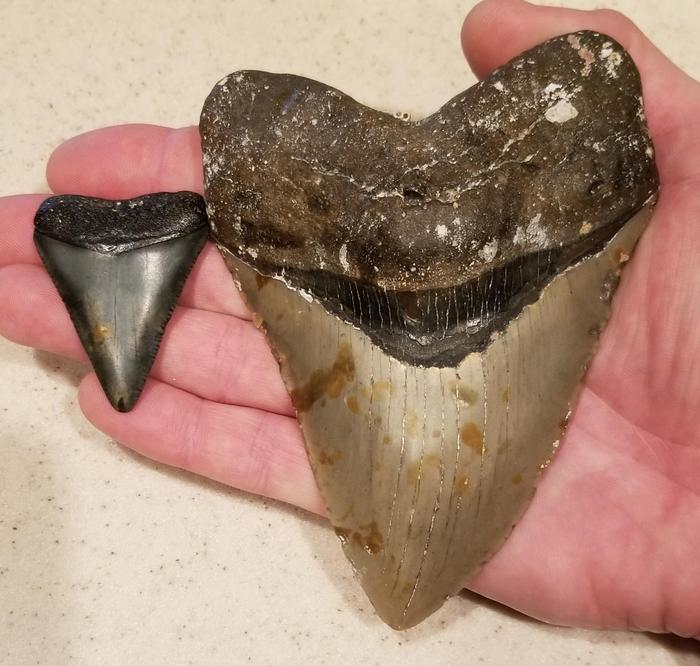Any fan of modern monster movies will be familiar with megalodon, the megatooth shark, which once lurked among the waves. It was the largest marine predator that ever lived and the apex hunter of its day. Now, new research has shown that this prehistoric leviathan was also warm-blooded, which may help explain why it went extinct.
Megalodon (formally called Otodus megalodon), or Meg as it is popularly known, was a gigantic shark that roamed nearly worldwide around 15 to 3.6 million years ago, and reached at least 15 meters (50 feet) in length. For some time, it was assumed that Meg was likely warm-blooded or at least regionally endothermic – an adaptation that allows some species of fish, especially some modern-day sharks (such as mako and great whites), to live in water that is too cold for other species.
Until recently, this idea was merely inferred, but a team of researchers have now found evidence to support it.
“The new study provides the first empirical evidence of warm-bloodedness in the extinct shark based on geochemical analyses applied to fossilized teeth,” co-principal investigator Kenshu Shimada, a professor in DePaul’s College of Science and Health, said in a statement.
Shimada and colleagues analyzed isotopes in the tooth enamel of the ancient predator to test the endothermy hypothesis.
The main component of teeth is a mineral called apatite, containing atoms of carbon and oxygen. These atoms come in various isotopic forms and their composition within the tooth depends on a range of environmental factors. So, an analysis of this composition can shed light on where an animal lived and what it ate and, in the case of Meg and other marine species, what the surrounding seawater chemistry was like at time and what the animal’s body temperature was.
“You can think of the isotopes preserved in the minerals that make up teeth as a kind of thermometer, but one whose reading can be preserved for millions of years,” Randy Flores, a UCLA doctoral student and fellow of the Center for Diverse Leadership in Science, said in another statement.
“Because teeth form in the tissue of an animal when it’s alive, we can measure the isotopic composition of fossil teeth in order to estimate the temperature at which they formed and that tells us the approximate body temperature of the animal in life.”

Meg’s massive tooth dwarfs the one on the left, from a great white shark.
Image credit: Harry Maisch/Florida Gulf Coast University
The team’s tests suggest that megalodon could maintain a body temperature that was around 7°C (13°F) above the surrounding water. This level of difference is even greater than that of other shark species who existed alongside this giant and has enabled the researchers to classify Meg as being warm-blooded.
Megalodon has a rich fossil record when it comes to its massive teeth, but our understanding of its overall biology remains poor because no complete skeleton of the cartilaginous fish has ever been found.
“Otodus megalodon was one of the largest carnivores that ever existed, and deciphering the biology of the prehistoric shark offers crucial clues about the ecological and evolutionary roles large carnivores have played in marine ecosystems through geologic time,” said Shimada.
The ability for this shark to regulate its body temperature is significant because the evolution of warm-bloodedness has often been seen as a key factor in its enormity. In the past, regional endothermy was evoked as a way to justify Meg as resembling modern great white sharks, at least in terms of their shape. This image remains speculative, but the new research does show that Meg also had a high metabolism compared to ectothermic sharks.
This high metabolism would have come with a cost, however. The researchers believe that it may have contributed to the species’ overall extinction. At the time that megalodon went extinct, the world experienced a period of climate cooling that may have impacted the habitats of its prey.
“The implication is that even though Otodus megalodon possessed traits like warm-bloodedness that allowed it to be adaptable to changing ocean temperature, it was not immune to the effects of climate change, highlighting the importance of conservation efforts to protect present-day sharks,” Shimada said.
“Maintaining an energy level that would allow for megalodon’s elevated body temperature would require a voracious appetite that may not have been sustainable in a time of changing marine ecosystem balances when it may have even had to compete against newcomers such as the great white shark,” Flores added.
The study is published in PNAS.
Source Link: Megalodon Was Warm-Blooded, A Trait That May Have Led To Its Extinction